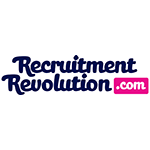Markets are becoming ever more global. The world we live in grows increasingly more interconnected by the day, and technological advancements mean we can work for anyone, from anywhere. The fabric of modern society is varied and so it should come as no surprise that this diversity should be reflected in the modern workforce.
What diversity in the workforce means
Diversity in the workforce is employing a range of diverse people; people with inherently different characteristics, backgrounds, gender, ages, religions, races, ethnicities, sexual orientation, education, outlooks, abilities and so forth.
Why a diverse workforce benefits the company
A diverse workforce brings greater talent to the team, as such stimulating a more innovative, creative and empathic environment. Research shows that the more diverse a company’s workforce, the more it outperforms its competitors and is better able to achieve greater profits.
Employing a wider talent pool ensures a company can meet the demands of clients and is suitably resourced to scale and meet extra demand placed on it.
Diversity enhances problem solving. A basic example: consider The Apprentice task that requires candidates to procure different items. The ability to correctly identify what the item is, given the name alone, and where they might find it, is surely boosted with a more diverse team.
Recruiting a diverse team makes companies more resilient, more effective and routinely perform better than companies preferring instead to stick to a homogeneous workforce.
So just how can you boost diversity in your workforce?
1. Break away from traditional recruitment strategies
- Change the language of your job advert. Remove unnecessary requirements from job descriptions that aren’t pertinent to the job. For example, not insisting candidates have a university degree if the degree won’t help them carry out the role, thereby encouraging candidates who may not necessarily have had the educational opportunities but who have gained experience via other routes, to apply. Studies have shown that men will apply for a job if they believe they’re 60% qualified, whereas women won’t apply unless they feel they’re 100% qualified.
- Sift CVs blind. By which we mean remove details such as name, gender or education, focusing attention instead on both hard and soft skills and job experience. Studies have shown than applicants with ethnic names have to send out more CVs than those without, before they get a callback. And female names can be ranked lower than male names.
- Actively look beyond your ideal candidate profile. It’s always a good idea to have a rough idea of who you’re looking for, but sometimes this person doesn’t exist. So be prepared to be flexible and place a higher onus on transferable soft skills rather than simply hard skills. Exact job requirements can always be taught; cultural and personality fit cannot.
2. Sing your diversity praises
If you have a diversity trumpet to toot, toot it. Like does attract like after all, and if you’re keen to boost your diversity credentials, shouting about the diverse team you already employee is only going to attract more diverse prospects.
- Showcase your diversity policies on your website and in your job adverts.
- Create company videos that you can share across your social media and your careers page.
The more you can demonstrate your commitment to diversity, the more institutionalised it will become.
3. Enforce diversity training throughout your company
Diversity training shouldn’t be limited to recruiters or managers. Diversity training should be mandatory company wide.
If you want to encourage a diverse workforce, then you need to create and foster a company culture of diversity to ensure your workplace remains an inclusive one.
If you don’t have a diversity training programme in place, consider creating one and ensure that every employee, both new and old, takes part in the programme either during their onboarding process, or as annual training.
Diversity isn’t a checkbox to be ticked once and then forgotten, diversity is an ongoing commitment that needs to be carefully tended to make sure that all employees are on the same page.
If you need to, get a cultural diversity expert in to help you create a diversity programme or to implement one.
Also make sure line managers are fully trained on dealing with conflict resolution in a diverse environment.
4. Include diversity in your company branding
If you’re serious about boosting diversity in your workforce, then it needs to be ingrained in your company culture and across your company branding.
- This can easily be done by adapting your company mission statement to include your stance on diversity.
- Or by including images and sharing blogs and articles across your social media, your website, even in your offices, demonstrating your commitment to diversity and diverse causes.
- Highlight any awards you have won regarding your stance on boosting diversity in your workforce on your website’s career page.
- You could even dedicate an entire section of your company website to diversity and inclusion, showcasing your diverse initiatives.
5. Make it a team effort
Ensuring you have a diverse workforce shouldn’t be the responsibility of just one person.
Encourage workforce diversity with an employee referral programme that is mandatory during the onboarding process – i.e. every new recruit has to refer a diverse prospect. Or put together a diversity committee (made up of diverse employees across the ranks) dedicated to creating a more diverse workplace.
And don’t forget to include diversity on your management team – research shows you’ll yield 19% higher revenues if you do.
Conclusion
Finally, when you make diversity a company wide policy, rather than a managerial specific issue, you encourage employees to adopt it as part of the culture, ingraining it into the company. As such, you create principles of tolerance and acceptance that permeate the company framework much deeper than a directive from the boss ever could.








